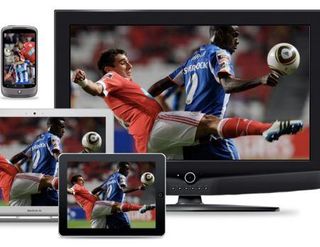AT&T: TV Revenue 'Re-shifting' to Mobile Video

In a sweeping presentation to analysts Wednesday, DirecTV parent AT&T laid out its pay TV vision for the future, focusing its efforts on mobility and encouraging customers to watch video on their tablets and smartphones.
The efforts begin with an aggressive promotion – offering DirecTV and U-Verse TV customers $500 in credits if they switch their wireless plan to AT&T – a concerted effort to bundle its wireless offering with its video product, something its current competition doesn’t do.
“I want Comcast to really regret the fact that they don’t own a wireless asset and maybe have to do something about it,” said AT&T Entertainment & Internet Services CEO John Stankey at the company’s recent Analyst Day.
AT&T completed its $48.5 billion purchase of DirecTV on July 24, making it the largest MVPD in the country with 26.3 million customers. It appears that the phone company plans to use that newfound heft to help address what it says is a shifting video market.
AT&T chairman and CEO Randall Stephenson told analysts that the phone company saw the shift even before it started to pursue DirecTV last year. He added that while cord-cutting and cord-shaving continues to cut into the pay TV subscriber base, the answer could be in offering customers more flexibility in where and when they watch programs.
“TV everywhere is what’s being consumed by a lot of millennials and our research is bearing this out,” Stephenson said, adding that even as linear TV customers decline as household growth rises, it is a “manageable decline.”
Stephenson said he does plan to see cord cutting and cord shaving accelerate, but the blow could be softer for AT&T given its additional scale and its product mix.
“What we’re seeing is a $50 package on DirecTV, there’s not much difference in absolute margin to a $90 package on U-Verse,” Stephenson said. “Cord shaving isn’t a big issue with us, as we think about the fully integrated cap TV, broadband and mobility – we’ve got the pricing right. …We’re actually convinced as linear TV subscription and ARPU might get pressured over time, the pricing is such that the mobility piece of revenue and the fixed broadband piece of revenue move up. There’s going to be a re-shifting of revenue and our expectation is that we can probably grow revenue per household for the foreseeable future.”
Multichannel Newsletter
The smarter way to stay on top of the multichannel video marketplace. Sign up below.
While Stephenson called the integration of mobility and TV a new one, the cable industry has tried it on several occasions in the past with limited success.
In 2011, a the SpectrumCo consortium, which included Comcast, Cox, Time Warner Cable and Bright House Networks, sold its wireless licenses to Verizon for $3.6 billion. As part of that deal the cable companies reached an MVNO agreement with Verizon that would allow them to resell wireless service under their own brand name, but so far no new products have come from that agreement. Last month, according to reports, Verizon and Comcast were in talks to amend that agreement.
Cable operators have a chequered past with wireless service, forming and dismantling consortiums over the years, most recently the Pivot partnership in 2008.
Cox Communications had planned to launch its own wireless service in 2009, but scrapped those plans in 2011, selling most of its spectrum to Verizon in a $315 million deal.










